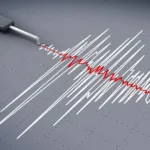Exploring the Moon’s Radio Quiet Zone
The Moon is set to become a hub for space programs in the coming years, with various nations and agencies planning missions to our celestial neighbor. NASA’s Artemis III mission, scheduled for 2025, will mark a significant milestone by landing the first woman and first person of color on the lunar surface since the Apollo Era.
Global Collaboration in Space Exploration
By the Artemis Accords, multiple space agencies, including European, Canadian, Japanese, and astronauts of other nationalities, will join in lunar exploration efforts. Following them, taikonauts (China), cosmonauts (Russia), and vyomanauts (India) will conduct vital research and exploration activities.
Moon as a Scientific Haven
Facilities like the Artemis Base Camp and the International Lunar Research Station in lunar orbit offer unparalleled opportunities for scientific research not achievable on Earth or in Earth’s orbit. One exciting prospect is radio astronomy, which can thrive on the Moon’s far side due to its isolation from terrestrial interference.
Uncovering the Cosmic Dark Ages
Scientists have long yearned to study the “Dark Ages” of the Universe, a period around 380,000 years after the Big Bang when the cosmos was filled with neutral hydrogen. During this era, the first stars and galaxies began forming, but the only visible light came from the Cosmic Microwave Background (CMB) and the 21-cm spectral line of neutral hydrogen.
Challenges on Earth
Measuring this line from Earth is challenging due to atmospheric interference and terrestrial radio signals. These obstacles hindered our ability to observe this critical cosmic epoch.
Lunar Advantage
The Moon’s unique properties come to the rescue. Its far side is a radio-quiet zone, shielding it from Earth’s radio waves. Additionally, during lunar nights, lasting two weeks, interference from the Sun is minimal.
Lunar Radio Observatories on the Horizon
Several missions to the Moon are planned, including proposals for lunar radio observatories. One of these is the Lunar Surface Electromagnetics Experiment-Night (LuSEE-Night), a joint project by NASA and the Department of Energy (DoE) involving Berkeley Lab, Brookhaven National Laboratory, UC Berkeley, and the University of Minnesota.
LuSEE-Night: Listening to the Cosmos
The Berkeley Lab team is constructing an antenna for LuSEE-Night that will listen to radio waves from the Dark Ages. The experiment is set to launch to the Moon in 2025 to test the technology in the lunar environment.
Overcoming Lunar Challenges
Building on Earth for lunar conditions is not without challenges. The Moon’s southern polar region experiences extreme temperature fluctuations during its two-week days and nights. Communication with Earth is impossible on the far side, necessitating data relay through a satellite.
LuSEE-Night’s Radio Wave Collection
LuSEE-Night will rely on two pairs of antennas, measuring six meters from tip to tip, coiled to fit within a one-meter payload fairing. Once on the lunar surface, a spring-loaded mechanism will uncoil the antennas. A turntable will periodically adjust its position to correct for interference from celestial bodies and lunar regolith.
Looking Ahead
With the completion of a technical review, the Berkeley Lab team is working towards launching the experiment in 2025 as part of NASA’s Commercial Lunar Payload Services (CLPS) program, made possible by Firefly Aerospace. The success of LuSEE-Night could open new horizons for lunar research, offering insights into the ancient Universe’s mysteries.
Also Read: Revolutionary New Telescope In Action: Spectacular Footage Revealed






